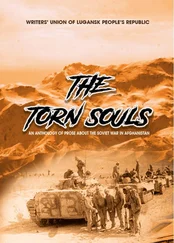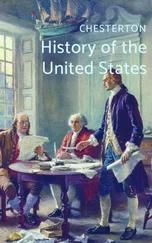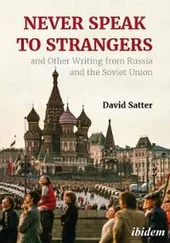In the event, Vikzhel proved unable to mobilize the railway workers to carry out their threat of a strike. For his part, Lenin decided to broaden somewhat the basis of his regime by admitting seven Left Socialist Revolutionaries to Sovnarkom. They stayed for only three months, before resigning over the Brest-Litovsk Treaty (see below, pages 61–2).
In the provinces, as in Petrograd, power also passed to the Bolsheviks in the form of a soviet takeover of some variety. Their opponents were either the scanty and poorly armed forces of the old tsarist local government bodies, the zemstvos and municipalities, or else Committees of Public Safety on the Petrograd model. Where the Bolsheviks had a majority in the local soviet, they assumed power smoothly, and used their domination of the local revkom (equivalent of MRC) to suppress their opponents. Where they did not have such a majority, they formed a soviet consisting simply of workers, or called directly on Red Guards or sympathetic garrison units to form a revkom and take power. Some of the bitterest fighting was in Moscow, where the soviet did not set up a revkom till the Petrograd seizure was already accomplished and the soviet troops needed a further week, with artillery barrages, to overcome the Committee of Public Safety.
The only places where the Bolsheviks’ methods were used successfully against them were, significantly, the national areas, where local support could be secured for a policy directed against the ‘Russians’ or the ‘Muscovites’. A notable example of this was Kiev, where the Ukrainian nationalists managed to swamp the local congress of soviets.
The one body that might successfully have resisted the Bolshevik coup was the officer corps. They, however, after the experience of the Kornilov affair, were less than lukewarm in their support for the Provisional Government. General Cheremisov, commander of the northern front, refused to divert any troops from his sector to defend Kerensky. The latter’s desperate personal mission to the front only succeeded in raising some seven hundred Cossacks commanded by General Krasnov: these advanced as far as the Pulkovo Heights, outside Petrograd, but were resisted and eventually thrown back by a large force of Red Guards and of sailors from the Baltic Fleet. A rising of officer cadets within the city was not coordinated with this expedition and was crushed separately by Red Guards.
In this way, during November and December, the Bolsheviks succeeded in extending their control to most of the country which had been ruled by the Provisional Government. There remained, however, a final potential limit to their authority. This was the Constituent Assembly, whose nationwide elections were imminent even as the seizure of power took place. This body had been the aspiration of Russian democrats and socialists since before the 1905 revolution. The Bolsheviks themselves had criticized the Provisional Government for not hastening its convocation, and even after taking power they called their new ‘Workers’ and Peasants’ Government’ ‘provisional’ in deference to the claims of the assembly.
Privately Lenin had strong forebodings that the Constituent Assembly would not support the Bolsheviks, but he decided that his new government could not allow itself the outrageous inconsistency of forbidding its convocation. His fears were confirmed by the results of the elections, held in November. The Socialist Revolutionaries polled 15.8 million votes and emerged as the largest single party, with 380 seats, while the Bolsheviks, with 9.8 million votes and 168 seats, were a respectable but clear second. Once that was evident, Lenin began to speak of the Assembly as if it were on a level with the Provisional Government, an institution of ‘bourgeois democratic type’ whose only function must be to yield to a ‘democratic institution of a higher order’, namely the soviets.
Even though they had lost the election, the Bolsheviks did permit the assembly to meet. They did everything possible, however, to instil in its members the impression that they were on sufferance, even under direct threat, from the new government. Sovnarkom issued a decree outlawing the leading members of the Kadet Party (which had 17 seats in the assembly), as a party of ‘enemies of the people’ (the first use of a phrase which was to have terrifying implications under Stalin); their newspapers were closed down, and some Socialist Revolutionaries and Kadet delegates were in fact arrested. On the day the assembly opened, 5 January 1918, Red Guards were posted all over Petrograd, especially around the Tauride Palace, where the assembly was to meet. Even during the session itself, soldiers leered at the delegates from the balconies, and took symbolic aim at them with their rifles.
The Bolsheviks put before the assembly a resolution recognizing the authority of the new Soviet government. The assembly rejected it, and went on to pass the first ten articles of a new Basic Land Law, intended to supplant the new Bolshevik legislation on the subject. The guards then requested the chairman to adjourn the session, and locked and sealed the building so that the delegates could not meet the next day. Rejection of the Bolshevik resolution had meant the forcible end of the Constituent Assembly.
Some Socialist Revolutionaries had recognized before the Assembly met that its fate would be decided by force. They had set up a Committee for the Defence of the Constituent Assembly, and, like MRC before them, had appealed for the support of the garrison troops in the city. According to one of their members, Boris Sokolov, the Semenov and Preobrazhensky regiments were prepared to come to their support, but the Socialist Revolutionary Central Committee decided against using arms in defence of the assembly. They anticipated that the government would win any armed confrontation in the capital, and decided therefore to rely on the moral appeal of the Constituent Assembly and the broad support which the Socialist Revolutionaries enjoyed in the country at large. When a workers’ demonstration took place in support of the assembly, then, it was unarmed and was forcibly dispersed by the Red Guards, with the loss of some lives.
The dissolution of the Constituent Assembly was confirmed the next day by the Third All-Russian Congress of Soviets, and the Soviet government finally removed the word ‘provisional’ from its title.
Looking at the resistance offered by the moderate socialists, one cannot but conclude that they misjudged both the historical situation and the nature of the Bolshevik Party. They all considered the October seizure of power to be an adventurist putsch, morally reprehensible and objectively unjustified by Russia’s social and economic development. They tended to regard the Bolsheviks as misguided comrades who would be taught a lesson both by history and by the Russian people. None of them thought the Bolsheviks could last long in power. For that reason the reaction of most Socialist Revolutionaries and Mensheviks was to keep their moral record clean for the battles of the future by walking out of the soviets and assemblies where the Bolsheviks had just taken control. In that way they more or less capitulated without putting up a fight (though one should note the places, notably Moscow, which were exceptional in this respect). Only belatedly and reluctantly did many of them come to realize that if the Bolsheviks were to be effectively resisted, then it must be by force.
In the long run, some army officers, the liberal parties and many of the Socialist Revolutionaries did come round to the view that it was necessary to fight the Bolsheviks. By that time, however, this meant a civil war in which the Bolsheviks already held many of the advantages.
Even after the dissolution of the Constituent Assembly, it was not clear what form of government the Bolsheviks would be able to install, what its relations would be with local soviets as local centres of power, nor what kind of support it would receive from the various sectors of the population. The Bolsheviks had called for ‘All Power to the Soviets’, but Lenin clearly had reservations about that slogan, and the manner in which he had established Sovnarkom did not augur well for the future of decentralized government. The Bolsheviks had also talked a great deal of the ‘dictatorship of the proletariat’ and had called their new government a ‘Workers’ and Peasants’ Government’; but how was the proletariat to put their new-found authority into effect? What was to be the relation between the new centralized institutions of the Soviet government (admittedly as yet largely on paper) and bodies like trade unions and factory committees, which had their own narrower interests to defend?
Читать дальше












